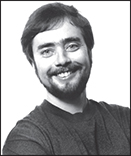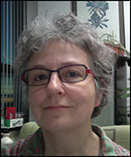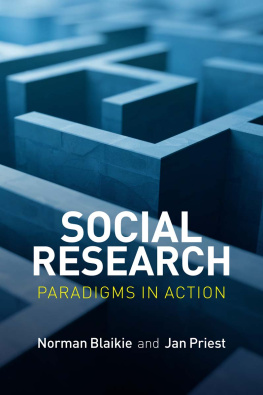Contents
Contents
Ahead of the Curve
Hidden breakthroughs in the biosciences
Michael Levin
Tufts University
Dany Spencer Adams
Tufts University
IOP Publishing, Bristol, UK
IOP Publishing Ltd 2016
All rights reserved. No part of this publication may be reproduced, stored in a retrieval system or transmitted in any form or by any means, electronic, mechanical, photocopying, recording or otherwise, without the prior permission of the publisher, or as expressly permitted by law or under terms agreed with the appropriate rights organization. Multiple copying is permitted in accordance with the terms of licences issued by the Copyright Licensing Agency, the Copyright Clearance Centre and other reproduction rights organisations.
Permission to make use of IOP Publishing content other than as set out above may be sought at .
Michael Levin and Dany Spencer Adams have asserted their right to be identified as the authors of this work in accordance with sections 77 and 78 of the Copyright, Designs and Patents Act 1988.
ISBN 978-0-7503-1326-1 (ebook)
ISBN 978-0-7503-1327-8 (print)
ISBN 978-0-7503-1328-5 (mobi)
DOI 10.1088/978-0-7503-1326-1
Version: 20161201
IOP Expanding Physics
ISSN 2053-2563 (online)
ISSN 2054-7315 (print)
British Library Cataloguing-in-Publication Data: A catalogue record for this book is available from the British Library.
Published by IOP Publishing, wholly owned by The Institute of Physics, London
IOP Publishing, Temple Circus, Temple Way, Bristol BS1 6HG, UK
US Office: IOP Publishing, Inc., 190 North Independence Mall West, Suite 601, Philadelphia, PA 19106, USA
This book is dedicated to all of the unsung pioneerspast, present, and future
who make fundamental discoveries Ahead of the Curve, and advance science by
bearing the risks that such creativity entails.
Preface
The popular conception of science is of a continuous, steady, upward climb of progress. The reality is not as simple. Highly significant discoveries may often stay unrecognized for decades, if they conflict with the current paradigm or extend it in ways hard to imagine at the time. Recently, we were bemoaning how important scientific signals get lost in the noise generated by the sheer volume of data and the dominance of the latest trend, whatever it may be. Once we started listing our own favorite unknown classics, and soliciting other titles from colleagues, we realized that there are substantially more than enough such forgotten, never-noticed, or ignored papers to fill a book. Re-viewing of research that identifies exciting and influential new aspects of science (here we focus on biology), well in advance of mainstream thought, provides fascinating and instructive case studies for improving our ability to recognize influential findings that significantly revise our understanding of the world. They serve not only as studies of the history of science, but as windows on the dynamic process by which knowledge progresses; moreover, by examining case histories of good science derailed by something other than evidence, we may learn how to better interpret new ideas and data that contradict our expectations.
We decided to start with evidence that important things really do get missed, by including important things that were, in fact, missed. Part is a compilation of papers that we believe describe important ideas and results that are, as yet, not widely known or used. We do not claim certainty that all of these papers will someday earn renown or prove useful; our argument is only that the ideas presented are supported by data and deserve closer inspection. Our claim is that all of these papers raise important questions or describe novel and essential ideas. Some go against conventional wisdom, some point out the importance of testing assumptions, still others contain known facts that are underused.
Michael Levin is eternally grateful to his parents, Benjamin and Luba, and his wife Kristin, for all of their support of his efforts to pull The Curve in novel and unusual directions. This book is for Sam and Arthur, with the hopes that your work may someday be featured in a future volume of this series.
Dany Spencer Adams expresses immeasurable gratitude to the always supportive AdamsOldenSilvan family, to wonderful friends, and to her husband Joe. This work is for Zachary, Ariana, Jeremy, Mia, Simone, Ariele, and Ben, with hope that their curiosity will lead them beyond what anybody else tells them is enough to know.
Acknowledgements
We are very grateful to Scott Gilbert, Ray Keller, Larry Stern, Richard Nuccitelli, Lev Beloussov, Wendy Brandts, Sara Walker, Jack Tuszynski, Susan Ernst, and Edward J Steele for suggestions of papers to include and for contributing their perspectives on the importance of the works. We are also grateful to numerous colleagues who suggested other papers and topics, which hopefully will be covered in subsequent volumes of this series. William F Baga did critical logistical work. We are also grateful for the guidance and expertise provided by IOP Publishing, especially Daniel Heatley, and Jessica Fricchione, as well as Chris Benson and Jacky Mucklow.
Author biographies
Michael Levin

Michael Levin was born in Moscow, Russia in 1969, and emigrated to the North Shore of Boston with his family in 1978. He worked as a software engineer interested in artificial intelligence prior to moving from computer science to biology. He received a PhD from Harvard Medical School in genetics, and did post-doctoral training working on the molecular mechanisms of embryogenesis. His first independent laboratory was at Forsyth Institute in 2000, establishing a novel research program in the biophysics of biological pattern control. The group moved to Tufts University in 2008, where he collaborates with computer scientists, bioengineers, and workers in cognitive neuroscience. His lab (www.drmichaellevin.org) now works on a number of frontier topics, including the communication and computation among non-neural cells that underlie control of biological growth and form, somatic memory and learning outside the brain, and artificial intelligence approaches to helping understand complex biological phenomena. He is currently Vannevar Bush Professor in the department of Biology, directing the Allen Discovery Center at Tufts University (allencenter.tufts.edu).
Dany Spencer Adams

Dany Spencer Adams is a Research Professor in the Department of Biology at Tufts University, a Principle Investigator in the Tufts Center for Regenerative and Developmental Biology, faculty in the EBICS program at MIT, and the author of Lab Math: A Handbook of Measurements, Calculations, and Other Quantitative Skills for Use at the Bench. Her movies of bioelectric signaling in developing Xenopus embryos have been seen on Discoverys Curiosity. She blogs about numbers at LabMath.org. She has always been interested in looking at questions that are off the beaten path, specifically in the area of biomechanics and biophysics during morphogenesis. As an undergraduate at UC Berkeley, she did research with Drs Ray Keller and M A R Koehl. She got her PhD from The University of Washington where she studied with Drs Thomas Daniel and Garret Odell. She started her independent career as an assistant professor in the Biology department of Smith College. After several years, she decided to focus on research full-time, starting what would turn out to be a long-term collaboration with Dr Michael Levin at The Forsyth Institute. There she began her studies of craniofacial development, specifically the roles of ion-flux dependent phenomena during differentiation and morphogenesis of cranial neural crest and placode-derived structures. Her current work also touches on ion flux during regeneration and during transformation, with a technical emphasis on adapting ion and membrane voltage imaging techniques for use in vivo in embryos. Because of the caliber and nature of their collaborations, Dr Adams joined Dr Levin for the move to Tufts University in 2008.














